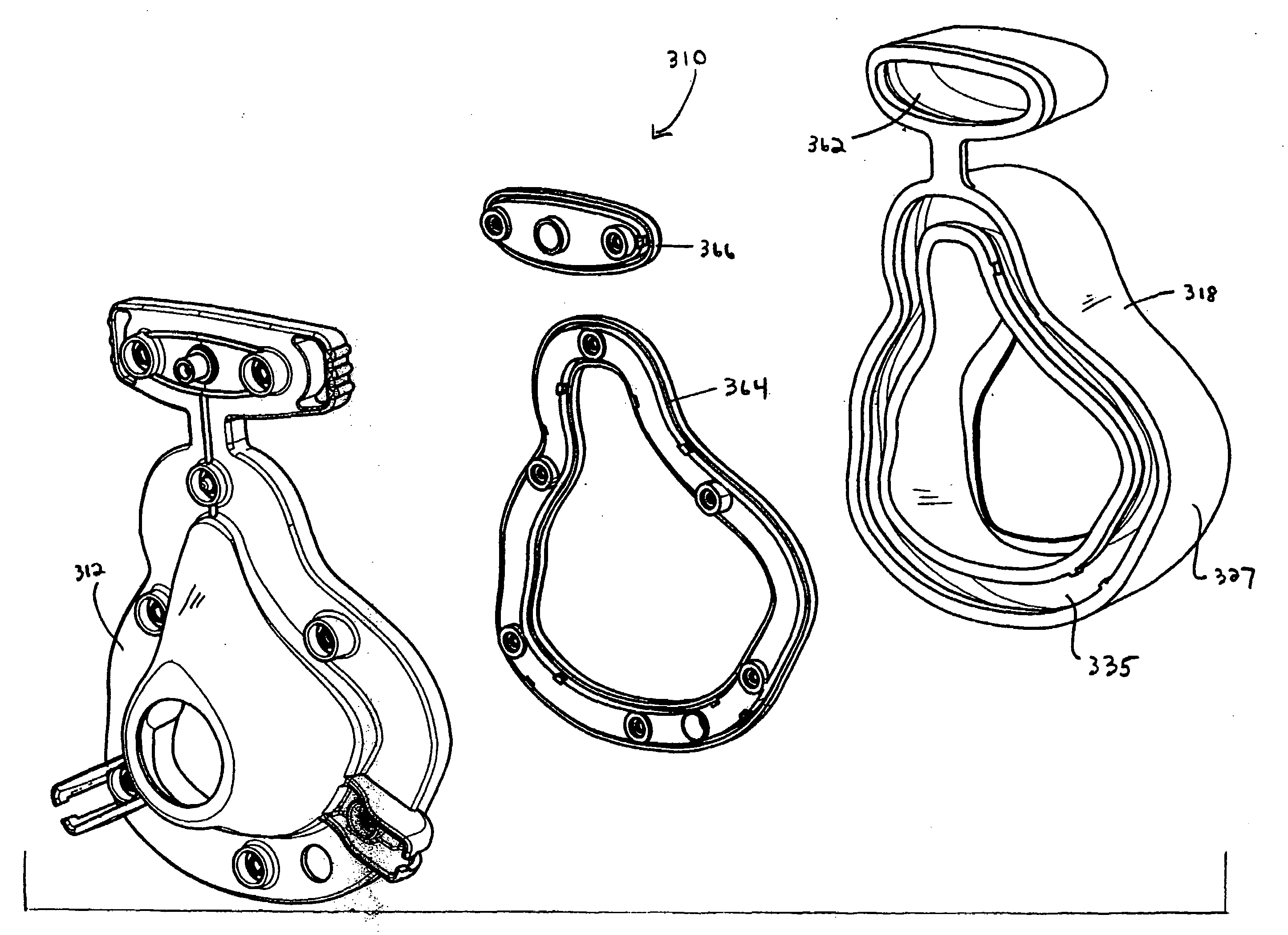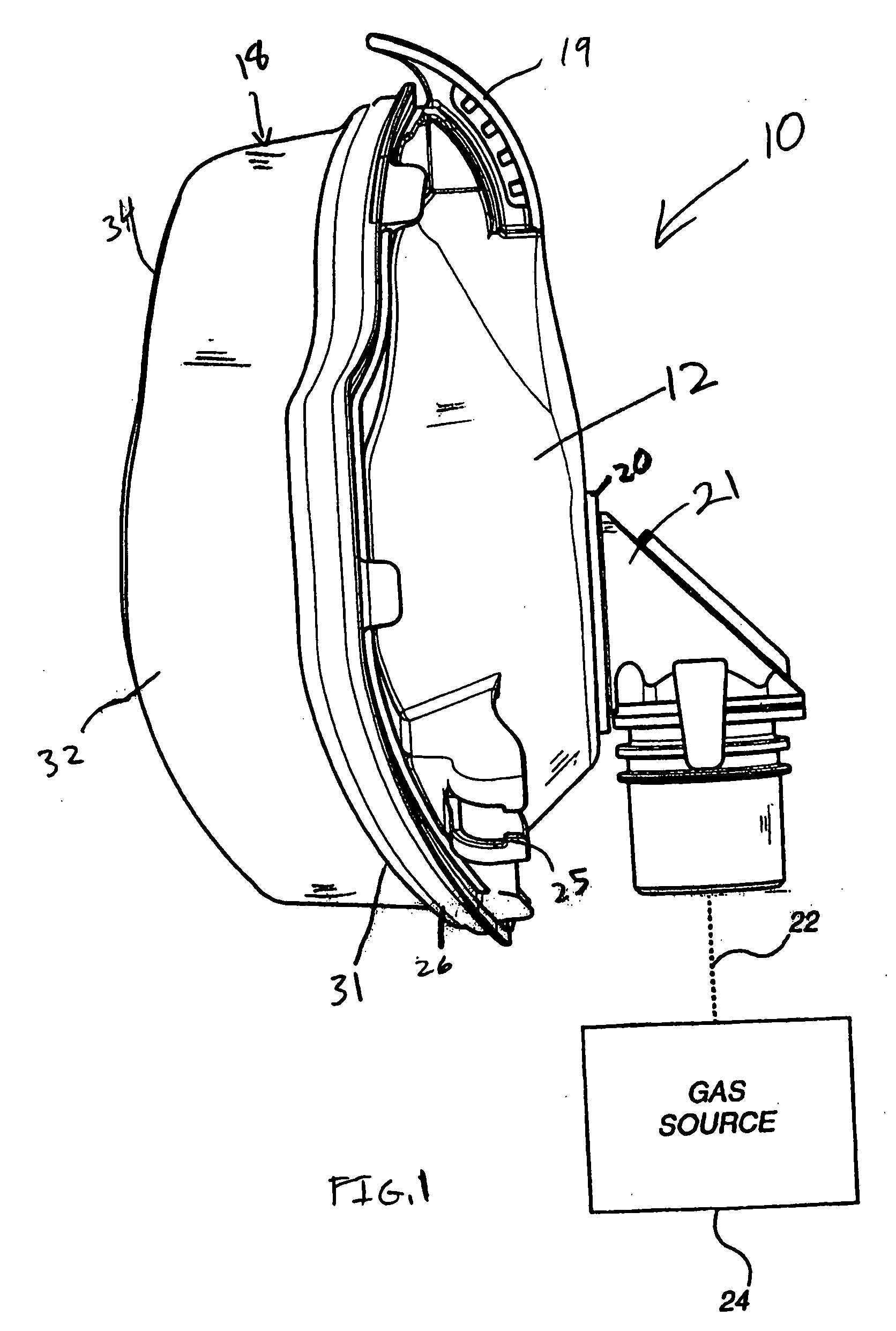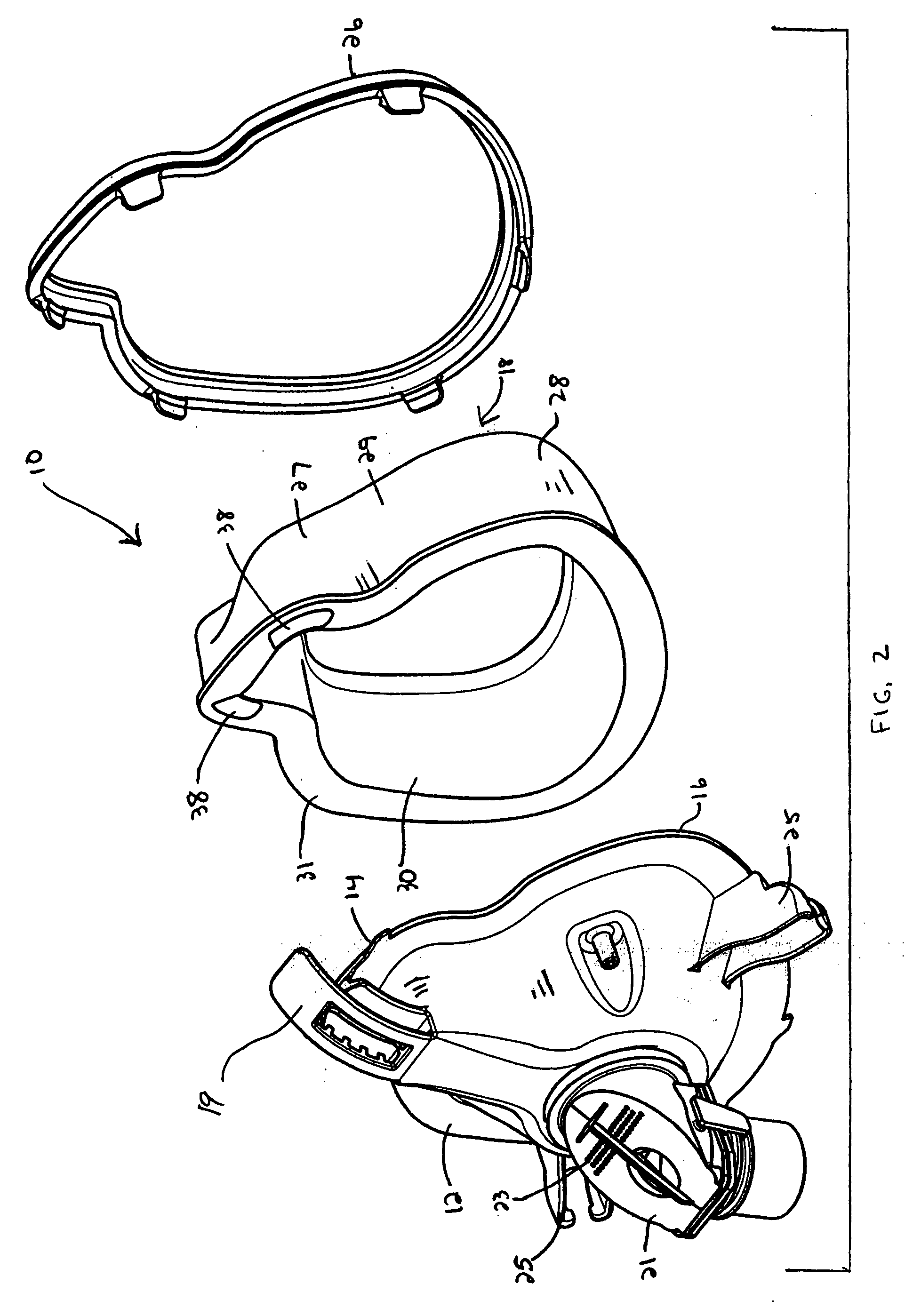Super-sofr gel seal and mask using same
a gel seal and supersofr technology, applied in the field of supersofr gel seal and mask, can solve the problems of inability to achieve optimal therapeutic or diagnostic objectives, user discomfort, and long duration of mask, and achieve the effects of improving body tissue compatibility, facilitating ventilation, and facilitating ventilation
- Summary
- Abstract
- Description
- Claims
- Application Information
AI Technical Summary
Benefits of technology
Problems solved by technology
Method used
Image
Examples
Embodiment Construction
[0035]Directional phrases used herein, such as, for example, horizontal, vertical, left, right, clockwise, counterclockwise, top, bottom, up, down, front, rear, and derivatives thereof, relate to the orientation of the elements shown in the accompanying drawings and are not limiting upon the claims unless expressly recited therein. Furthermore, the term “outer-side” or “front”, and all derivatives thereof, refer, for example, to the end of a respiratory mask that is nearest the patient when the respiratory mask is donned by the patient. In contrast, the term “patient-side” or “rear” and all derivatives thereof refer, for example, to the end of the respiratory mask that is farthest away from the patient when the respiratory mask is donned by the patient.
[0036]As employed herein, the term “number” shall mean one or more than one and the singular form of “a”, “an”, and “the” include plural referents unless the context clearly indicates otherwise. Additionally as employed herein, the st...
PUM
 Login to View More
Login to View More Abstract
Description
Claims
Application Information
 Login to View More
Login to View More - R&D
- Intellectual Property
- Life Sciences
- Materials
- Tech Scout
- Unparalleled Data Quality
- Higher Quality Content
- 60% Fewer Hallucinations
Browse by: Latest US Patents, China's latest patents, Technical Efficacy Thesaurus, Application Domain, Technology Topic, Popular Technical Reports.
© 2025 PatSnap. All rights reserved.Legal|Privacy policy|Modern Slavery Act Transparency Statement|Sitemap|About US| Contact US: help@patsnap.com



